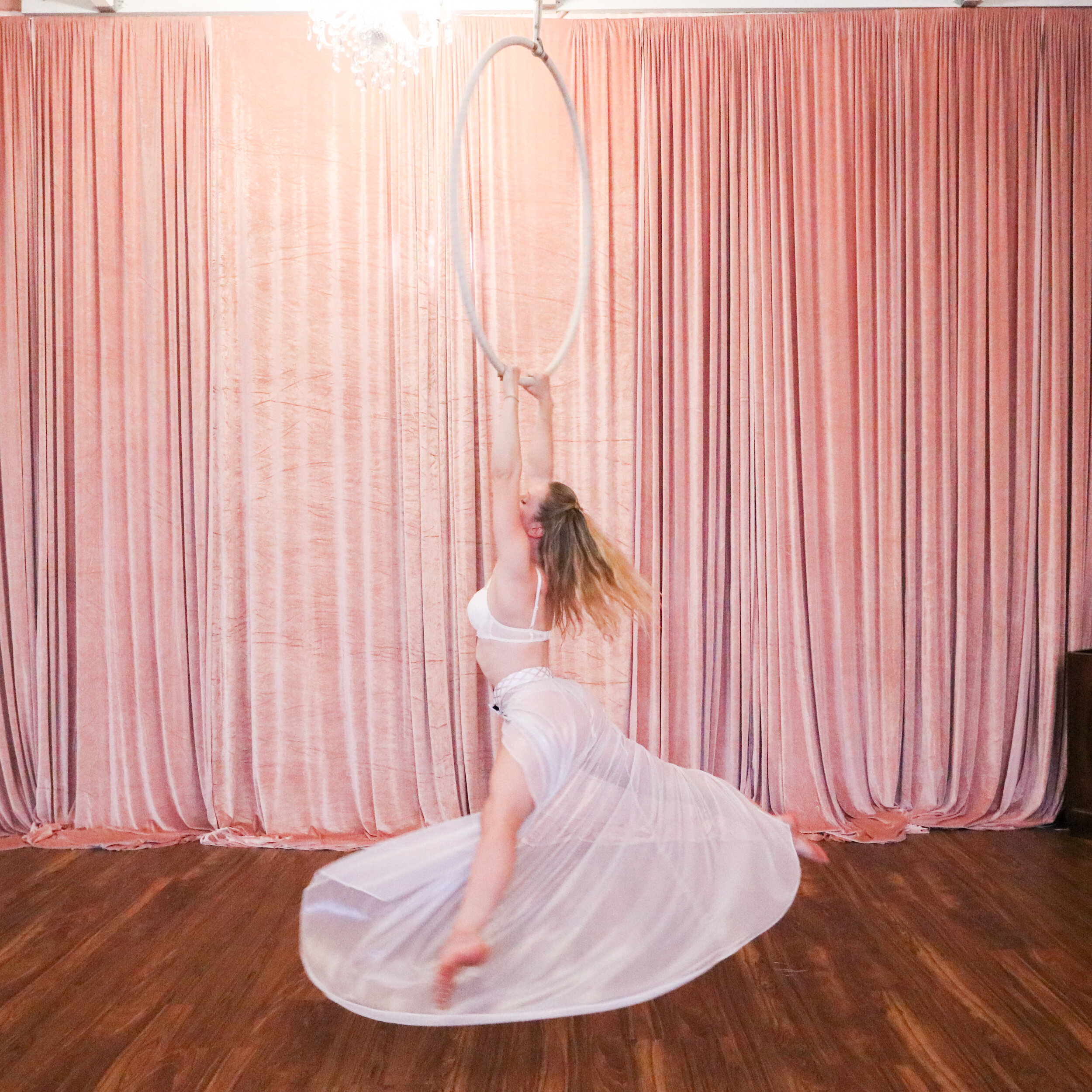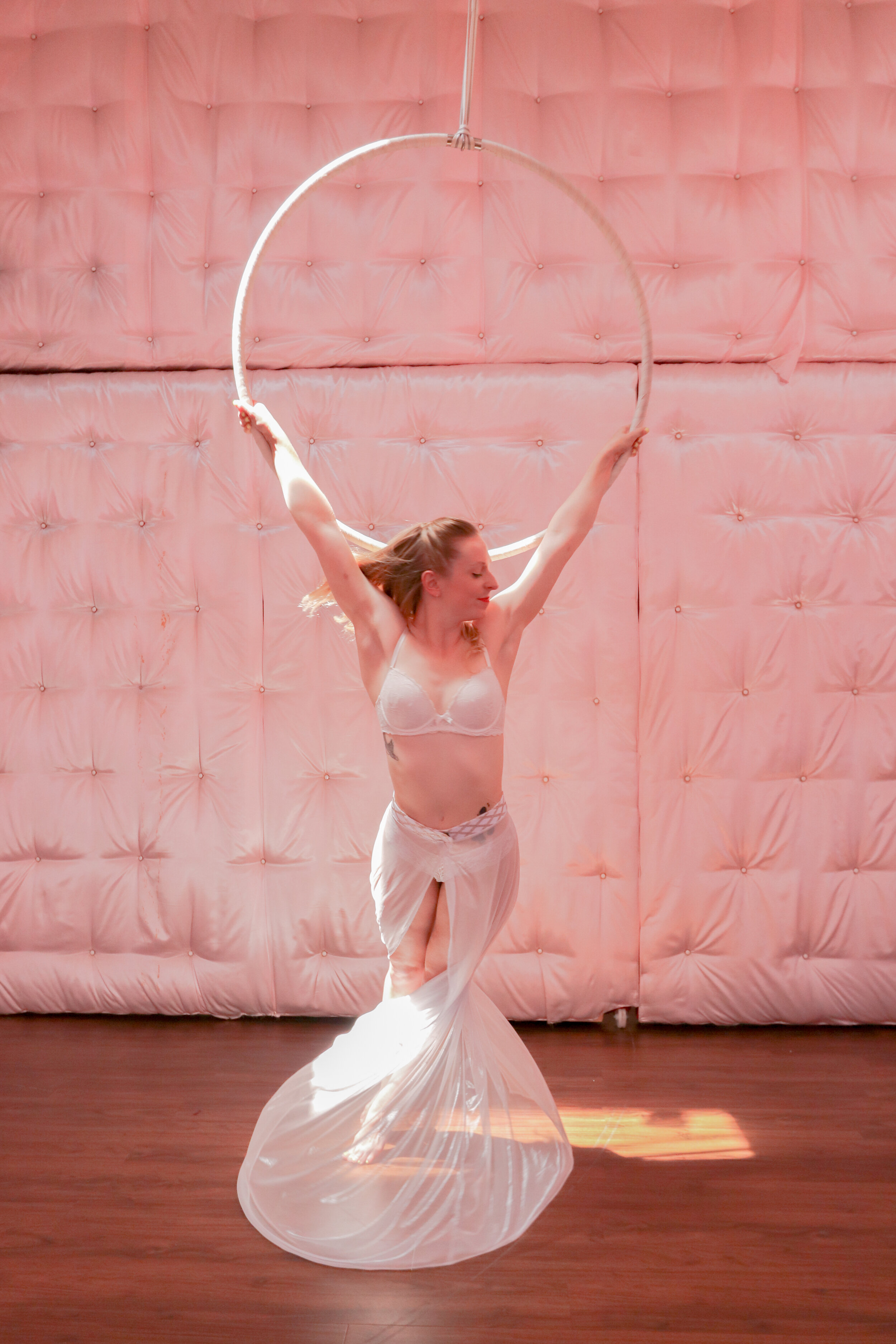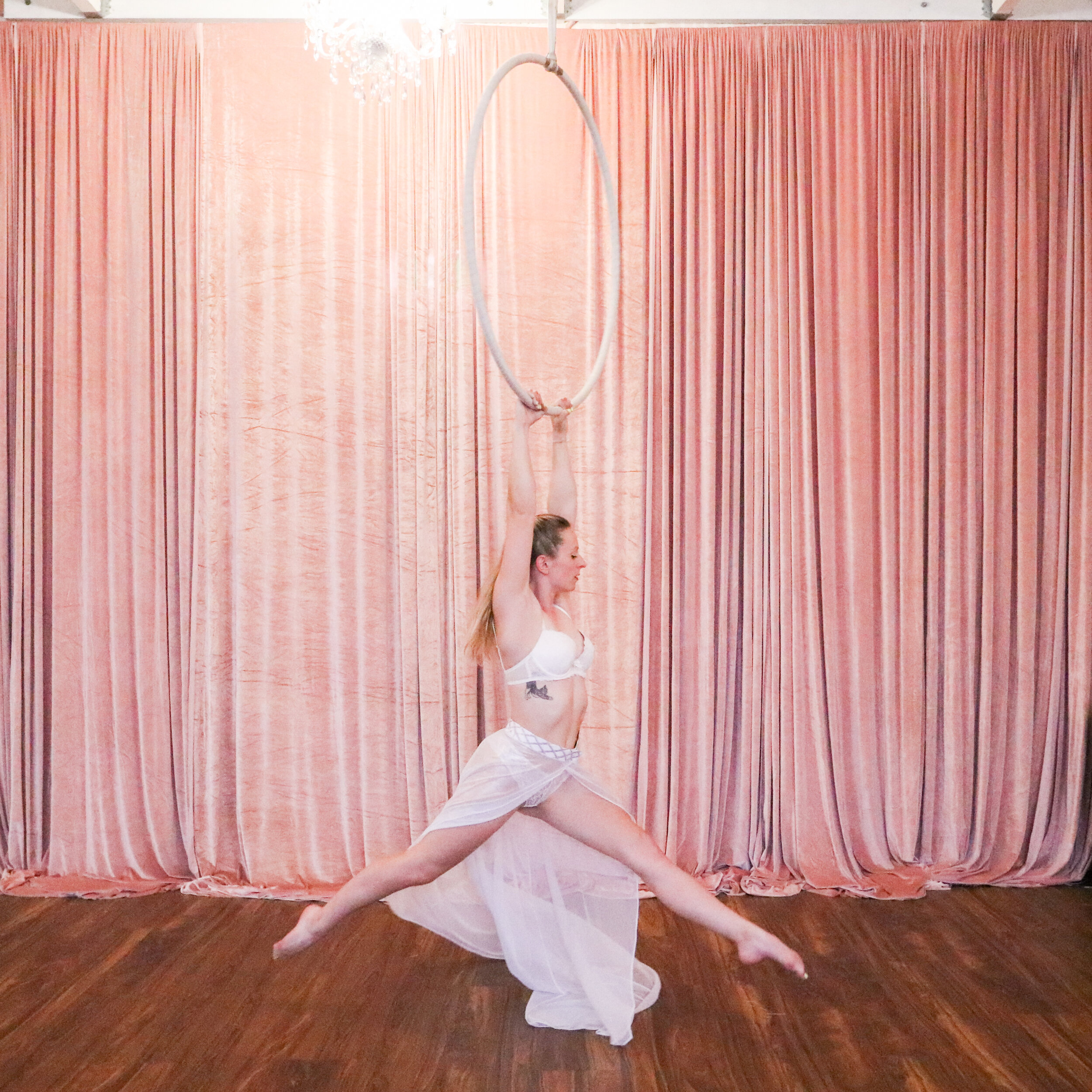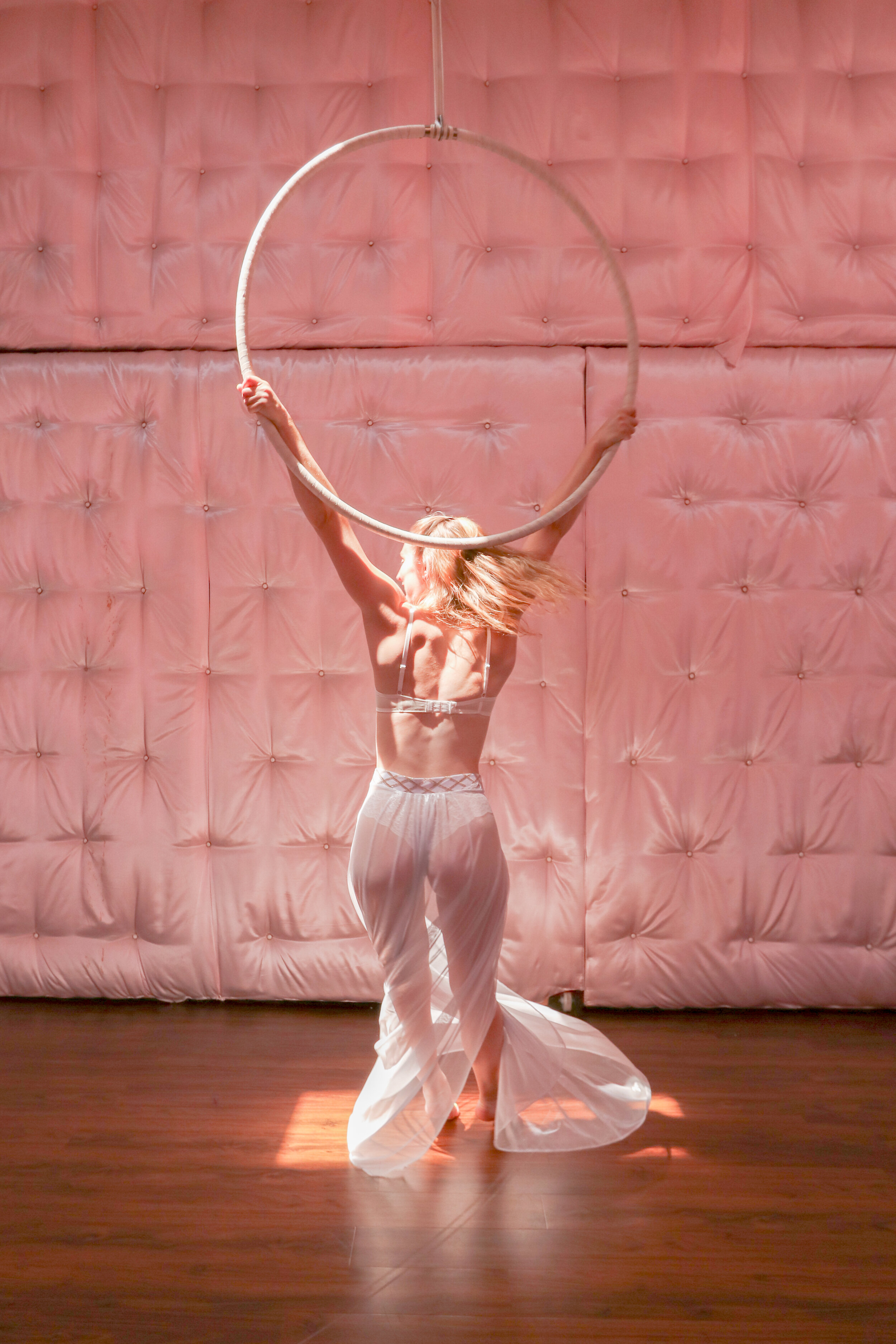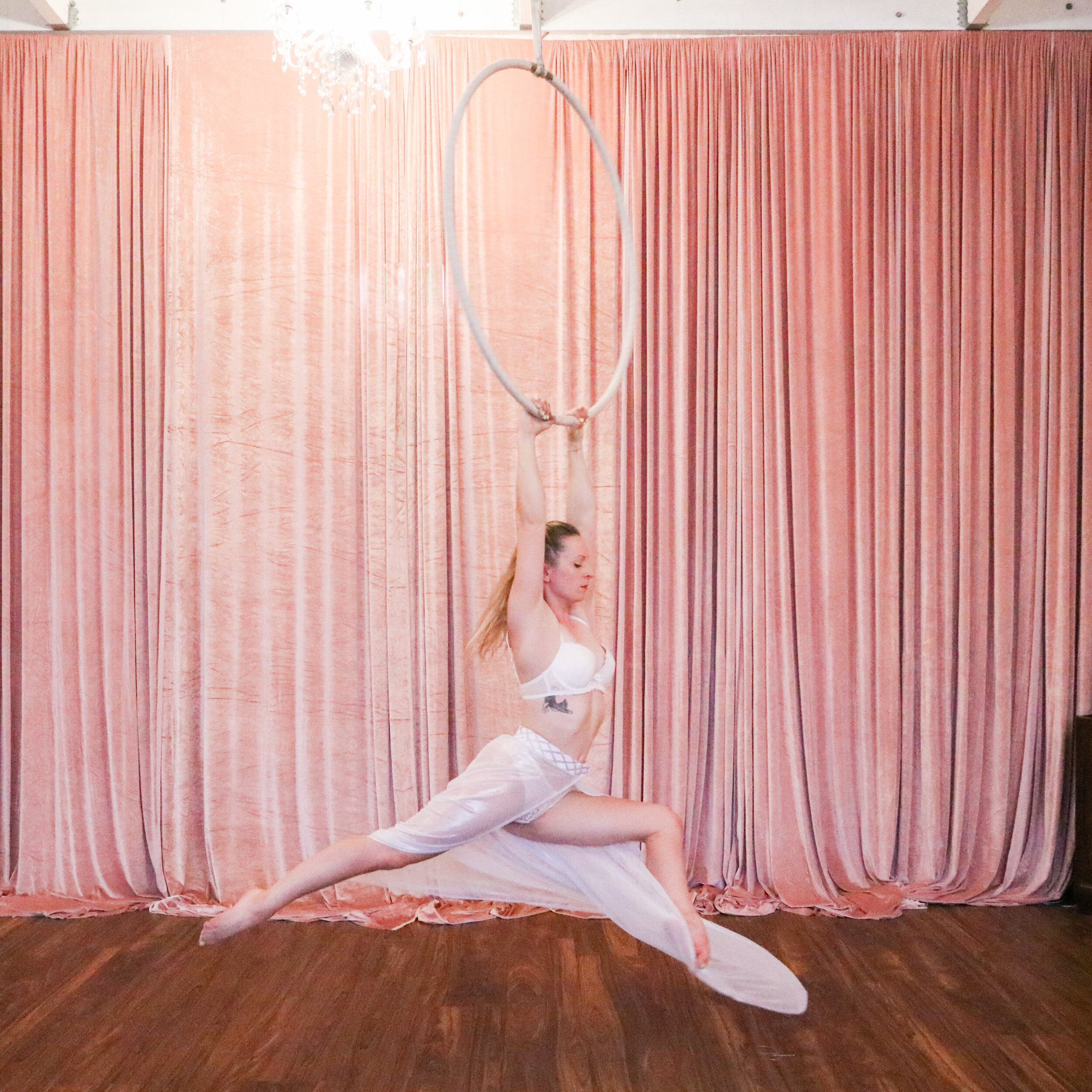Words by Kittyhawk | Photography by Mia Maraschino
Spinning is one of the most mesmerising aspects of lyra and sling – and also, the most challenging! Not only is it a physical strain to fight the dynamic force of spin, it’s also a huge mental game to cope with spin sickness.
When I started learning lyra, I thought spinning was THE WORST. I couldn’t spin for more than a few seconds before feeling dizzy, light-headed and nauseous. I thought it would never get better or look beautiful. I spent a lot of time working on it, as I wanted to be able to hypnotise the audience through spin like Katia and other amazing aerialists I’d seen.
Physical game aside, overcoming spin sickness will allow you to spin longer and faster without collapsing on the floor after your combo. So, what’s actually happening when we get spin sick?
What is spin sickness?
When I say ‘spin sickness’ I’m talking about any of the physical sensations your body gives you when it is not accustomed to spinning. This is a purely colloquial term and not medical! Although many of these sensations are similar to conditions like vertigo or motion sickness, spin sickness is not a physical aliment – it is a reaction your body is having to an experience it is not familiar with, i.e. spinning.
These physical sensations experienced during spin sickness – like dizziness, light-headedness or nausea – are mostly related to our brain instinctually panicking as we spin. What that means is that as our brain becomes accustomed to spinning, spin sickness will subside. Phew! That’s good news!
BUT, while our brain becomes accustomed to spinning, we still need to cope with spin sickness. These are my top tips for spin sickness to help get you back in the hoop and spinning faster than ever.
Small, consistent steps forward
When you start, set the bar really low and try not to overload your brain with too much spinning. Set a timer and start with just 5 seconds of spinning. Take breaks of 30 seconds or longer if you need between each spin and repeat 5 times. Increase the time to 10 seconds, then 20 seconds and 30 seconds when you feel ready. Over time, your tolerance will build until you are spinning confidently for longer.
Relax your eyes
Your brain searches out signals from your body’s 5 senses to interpret what is happening in the world. Sight is one of our brain’s favourite senses as it can give a lot of detailed information about a situation very quickly. If your eyes are sending signals to your brain of blur and fast movement from spinning, it may panic and exacerbate spin sickness.
Try not to look at anything while you are spinning by relaxing your eyes. You know that feeling when you are really tired, and you aren’t really looking at anything? That is the sensation we are looking for. Relax your eyes and feel what your body is doing instead. Don’t watch yourself in the mirror. When you need to see something, like where the bar is to move your hand, refocus your eyes on that spot only and ignore the blur of movement from the spin. Your eye muscles will become so much stronger at relaxing and refocusing!
Respect your body
If you feel dizzy or nauseous, STOP SPINNING! Respect that your brain and body are not coping well with the spinning you are doing and allow your dizziness/nausea to go away before starting again. If you spin while you are spin sick, you will only compound the effects until you feel extremely unwell. So, sit down and allow the feeling to pass.
Sweet treats to trick your brain
Make spinning a positive experience for your brain but rewarding yourself with a sweet treat between spin sessions. Sugar helps to cut through nausea and the reward centres of your brain will light up. The best sweet treats to try are sugar-coated jelly lollies or a sugary drink.
Don’t ‘spot’
Spotting is a technique commonly learned by dancers to assist balance while performing pirouettes. It involves maintaining eye contact with one spot in the room while you are turning and flicking your head around quickly to keep that eye contact. However, when we are spinning on lyra or sling, we start spinning at a mechanical speed too fast for our neck muscles to spot. Flicking your head at the last minute under a mechanical speed can also amplify the affects of spin sickness.
Distraction
If your brain is distracted with another task while spinning, it is less likely to put all it’s energy into panicking about the spin itself. Ask one of the Sirens to rig the lyra or sling low so that you can do a kitten mount spin into the hoop. Set your timer and aim to do 2 or 3 moves in the lyra while spinning so that your brain is occupied with the combo instead of the spin.
Spinning WILL get easier; it’s all about time and practice. Don’t be hard on yourself about your progress or about feeling spin sick. It’s all a normal part of the process of learning lyra. Once you’re spinning worry free you’ll open up a world of fluid lyra skills! Always feel free to stop me in the studio if you need help or have a question about spinning!




